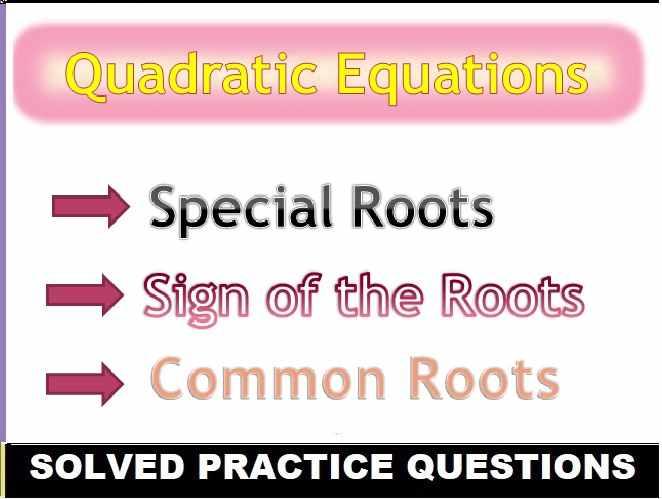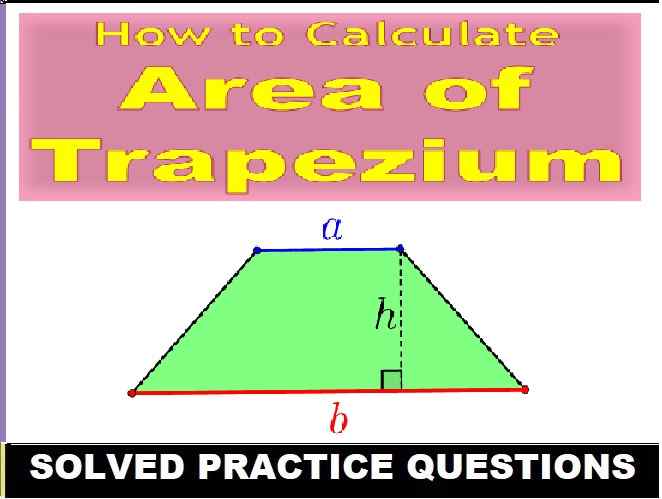ML Aggarwal Construction of Quadrilaterals Check Your Progress Class 8 ICSE Ch-14 Maths Solutions. We Provide Step by Step Answer of Check Your Progress Questions for Construction of Quadrilaterals as council prescribe guideline for upcoming board exam. Visit official Website CISCE for detail information about ICSE Board Class-8.
ML Aggarwal Construction of Quadrilaterals Check Your Progress Class 8 ICSE Maths Solutions
| Board | ICSE |
| Publications | Avichal Publishig Company (APC) |
| Subject | Maths |
| Class | 8th |
| Chapter-14 | Construction of Quadrilaterals |
| Writer | ML Aggarwal |
| Book Name | Understanding |
| Topics | Solution of Check Your Progress |
| Edition | 2023-2024 |
Construction of Quadrilaterals Check Your Progress
ML Aggarwal Class 8 ICSE Maths Solutions
Page-254
Question 1. Construct a quadrilateral ABCD such that AB = 4·5 cm, BC = 4 cm, CD = 3·9 cm, AD = 3·2 cm and ∠B = 60°.
Answer:
Steps of construction :
(i) Draw AB = 4·5 cm.
(ii) At B, construct ∠ABP = 60°.
(iii) From BP, cut off BC = 4 cm.
(iv) With C as centre, and 3·9 cm as radius draw an arc.
(v) With A as centre and 3·2 cm as radius,
draw an arc to meet the previous arc at D.
(vi) Join AD and CD.
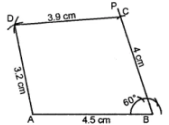
Question 2. Construct a quadrilateral ABCD such that AB = 5 cm, BC = 4·2 cm, AD = 3·5 cm, ∠A = 90°, ∠B = 60°.
Answer:
Steps of construction :
(i) Draw AB = 5 cm.
(ii) At A, construct angle = 90°
(iii) At Ef’ construct angle = 60°
(iv) With B as centre and 4·2 cm as radius,
draw an arc and mark it as C.
(v) With A as centre and 3·5 cm as radius,
drawn an arc and mark it as D.
(vi) Join CD. Then ABCD is the required quadrilateral.
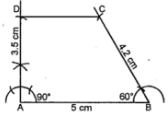
Question 3. Construct a quadrilateral ABCD in which AB 3·5 cm, BC = 5 cm, CD = 5·6 cm, DA = 4 cm and BD = 5·4 cm
Answer:
Steps of construction :
(i) Draw AB = 3·5 cm.
(ii) With A as centre and radius = 4 cm,
draw an arc and with B as centre and radius = 5·4 cm
draw an arc to meet the previous arc at D. Join AD and BD.
(iii) With B as centre and radius = 5 cm, draw an arc.
With D as centre and radius = 5·6 cm,
draw an arc to meet the previous arc at C.
(iv) Join BC and CD, then ABCD is the required quadrilateral.

Question 4. Construct a quadrilateral PQRS in which PQ = 3 cm, QR = 2·5 cm, PS = 3·5 cm, PR = 4 cm and QS = 5 cm.
Answer:
Steps of construction :
(i) Draw a line PQ = 3 cm.
(ii) With P as centre and 3.5 cm as radius,
draw an arc and with Q as centre and 5 cm as radius,
draw an arc to meet the previous arc at S.
(iii) Join PS and QS.
(iv) With Q as centre and radius = 2.5 cm,
draw an arc and with P as centre and radius = 4 cm,
draw an arc to meet the previous arc at R.
(v) Join PR and QR.
(vi) Join RS, then PQRS is the required quadrilateral.
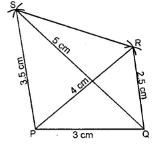
Question 5. Construct a quadrilateral ABCD given that BC = 6 cm, CD = 4 cm, ∠B = 45°, ∠C = 90° and ∠D = 120°.
Answer:
Steps of construction :
(i) Draw BC = 6 cm.
(ii) At B, construct ∠CBP = 45°.
(iii) At C, construct ∠BCQ = 90°
(iv) From CQ, cut off CD = 4 cm.
(v) At D, construct ∠CDR = 120°.
(vi) Let BP and DR meet at A.
Then ABCD is the required quadrilateral.
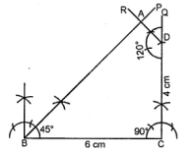
Question 6. Construct a parallelogram ABCD in which AB = 5.2 cm, AC = 6.5 cm and BD = 7.8 cm.
Answer:
Steps of construction :
(i) Draw a line segment AB = 5.2 cm.
(ii) With centre A and radius 6.5/2 cm = 3.25 cm
and with centre B and radius 7.2/2 =3.6 cm,
draw arcs intersecting each other at O.
(iii) Join AO and BO and produce them such that OC = AO and OD = BO.
(iv) Join DA, DC, CB.
ABCD is the required parallelogram.
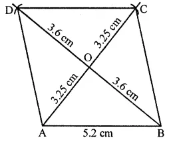
(ML Aggarwal Construction of Quadrilaterals Check Your Progress Class 8)
Question 7. Construct a parallelogram ABCD in which diagonal AC = 4 cm, diagonal BD = 6 cm and angle between diagonals is 75°.
Answer:
Steps of construction :
(i) Draw AO = 1/2 AC = 1/2 (4 cm) = 2 cm and produce AO to C
such that OC = OA.
(ii) At O, construct ∠COP = 75°.
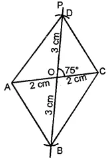
(iii) From OP, cut OD = 1/2 BD = 1/2(6 cm) = 3 cm.
produce OD to B such that OB = OD.
(iv) Join AB, BC, CD and DA, then ABCD is the required parallelogram.
Question 8. Construct a rectangle PQRS such that PQ = 3·5 cm and ∠RPS = 75°.
Answer:
Steps of construction :
(i) Draw PQ = 3·5 cm.
(ii) At Q, draw ∠PQT = 90°.
(iii) At P, draw angle of 15° which meet QT at R.
(iv) With R as centre and PQ as radius draw an arc.
(v) With P as centre and QR as radius cut the previous arc at S.
Join PS and RS. Then PQRS is the required rectangle.

Question 9. Construct a rectangle whose one diagonal is 6.8 cm and an angle between two diagonals is 105°.
Answer:
Steps of construction :
(i) Draw AO = 1/2 AC = 1/2 (6.8 cm) = 3·4 cm and produce AO to C
such that OC = OA = 3·4 cm.
(ii) At O, construct ∠COP = 105°.
(iii) From’OP, cut off OD = 1/2 AC = 1/2 × 6·8 = 3·4 cm.
[Because both the diagonals of rectangle are equal]
(iv) Produce OD to B such that OB = OD = 3·4 cm.
(v) Join AB, BC, CD and DA. Then ABCD is the required rectangle.
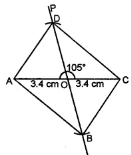
Question 10. Construct a rhombus BEST such that BE = 4.5 cm, ET = 6 cm.
Answer:
Steps of construction :
(i) Draw a line segment BE = 4.5 cm.
(ii) With centre B and radius 4.5 cm
and with centre E and with radius 6 cm
draw arcs intersecting each other at T.
(iii) Join TB and TE.
(iv) Again with centres E and T,
and radius 4.5 cm from both points,
draw arcs intersecting each other at S.
(v) Join ST and SE.
BEST is the required rhombus.
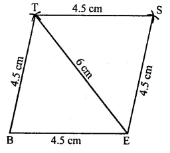
(ML Aggarwal Construction of Quadrilaterals Check Your Progress Class 8)
Question 11. Construct a rhombus whose diagonals are 7 cm and 5·3 cm.
Answer:
Steps of construction :
(i) Draw AC = 7 cm.
(ii) Draw ⊥ bisector PQ of AC to meet it at O.
(iii) From POQ, cut off OB and OD such that OB = OD = 1/2 BD = 5.3/2 = 2·65 cm
(iv) Join AB, BC, CD and DA. Then ABCD is the required rhombus.
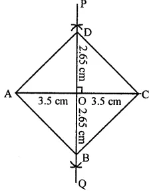
Question 12. Construct a square whose one diagonal is 5·8 cm.
Answer:
Steps of construction :
(i) Draw AC 5·8 cm.
(ii) Draw perpendicular bisector PQ of AC to meet it at O.
(iii) From POQ, cut off OB = OD such that OB = OD = 1/2AC = 1/2 × 5·8 = 2·9 cm.
(iv) Join AB, BC, CD and DA. Then ABCD is the required square.
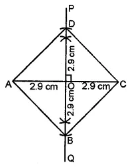
— End of Construction of Quadrilaterals Check Your Progress Class 8 ICSE Maths Solutions :–
Return to : – ML Aggarwal Maths Solutions for ICSE Class -8
Thanks
